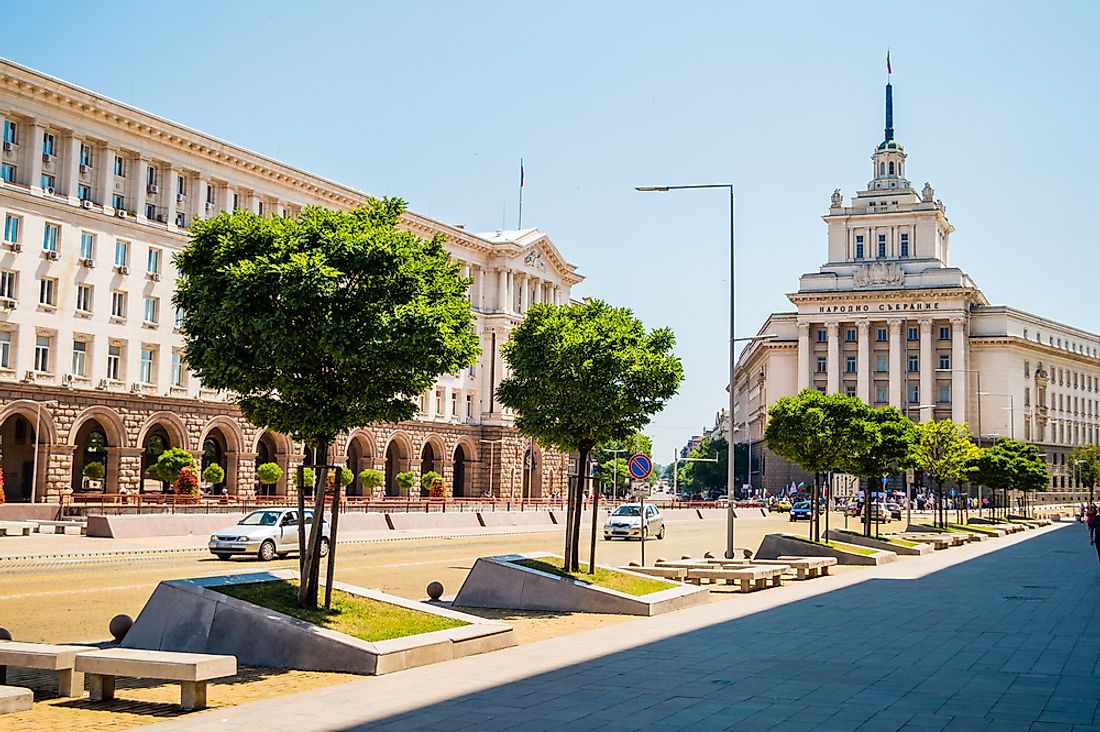What Is The Capital Of Bulgaria?

Sofia is the capital of Bulgaria. It also happens to be the largest city in Bulgaria. It is the home to an estimated 1.23 million people while another 1.68 million people live in its metropolitan area. The city of Sofia is at the center of the Balkan Peninsula and it is half-way between the Adriatic Sea and the Black Sea. It is closer to the Aegean Sea. The region where Sofia is located has been inhabited since 7000 BC. The city is home to many major universities in the country, and it is also the center of commercial activities and cultural institutions of the country. The city of Sofia was voted as one of the world’s top 10 best places for start-up businesses in information technology. It was also voted as one of the most affordable cities to visit in Europe in 2013.
Geography Of The Capital Of Bulgaria
The city is located on the slopes of the Vitosha Mountains and the Sofia Valley which has an altitude of 1800 feet. The city province of Sofia covers an area of 1344 square kilometers. To the north, Sofia is surrounded by the Balkan Mountains. Several small rivers such as the Vldayska and the Perlovska flow across the city.Sofia is famous for its forty-nine mineral and thermal springs. Because of its location inside a valley, Sofia has become one of the most polluted capital in the European Union.
Climate Of Bulgaria's Capital City
The city experiences humid continental climate with a yearly average temperature of 10.6oC. In January temperature can fall to as low as -15oC. During winter, it gets really cold and snowy while it is warm and sunny during summers. Being located in a mountainous area, Sofia is usually relatively cooler compared to other regions in Bulgaria. On average, the precipitation is about 581.8 mm a year. This value is maximum in early summer and late spring.
Cityscape Of The Capital City Of Bulgaria
Sofia has an estimate of 101,696 buildings and 607,473 dwellings. There is a wide variety of architectural styles in the city of which some are not compatible aesthetically. These styles range from the Roman Christian designs to Socialist time buildings. Some of these buildings include Rotunda of St. George, Amphitheatre of Serdica and the Serdica fortress.
Tourism In Sofia
Besides the resorts in the mountain and the coastal regions, Sofia is the most popular tourist destination place in Bulgaria. The Vitosha Mountains provide a great hiking site especially due to their accessibility from the city. During winter, the mountains provide great skiing conditions on their slopes. Another major tourist destination place in Sofia is the Alexander Nevsky Cathedral which was constructed in the 19th century. The cathedral covers an area of 34,122 square feet and accommodates an average of about 10,000 people. The largest museum in Bulgaria is also located in Sofia, the National Historical Museum. Here, one can find a wide range of collection which dates far back to the Prehistory to the modern era. There is also the National Archeological Museum which was formerly a mosque and which is found between the Presidency and the National Bank.
Demographics Of Sofia
According to the 2016 figures, it shows that the capital of Bulgaria had a population of 1,304,772 people. For every 1000 men, there are 1,102 women.In 2009, Sofia’s natural growth rate was 0.2 per mille which was the first positive in almost 20 years. This growth in population can be attributed to increased immigration into the city. The latest census shows that 87.9 % of the population are Bulgarians, 1.5 % Romani, 0.5 % Turks, 0.8 % are other ethnic groups while the rest do not affiliate with any ethnic group. Majority of the people are Eastern Orthodox Christians followed by Protestants then Muslims and finally the Roman Catholic.
Economy, Transport, And Infrastructure In Sofia
The Bulgarian national bank and the stock exchange are located in Sofia. In 2013 Sofia’s GDP per capita was $35,000, and the strongest sector in the economy was the manufacturing. Every transport mode is available in the city except water transport. The Sofia Airport had a capacity of 4,980,387 passengers in 2016.







